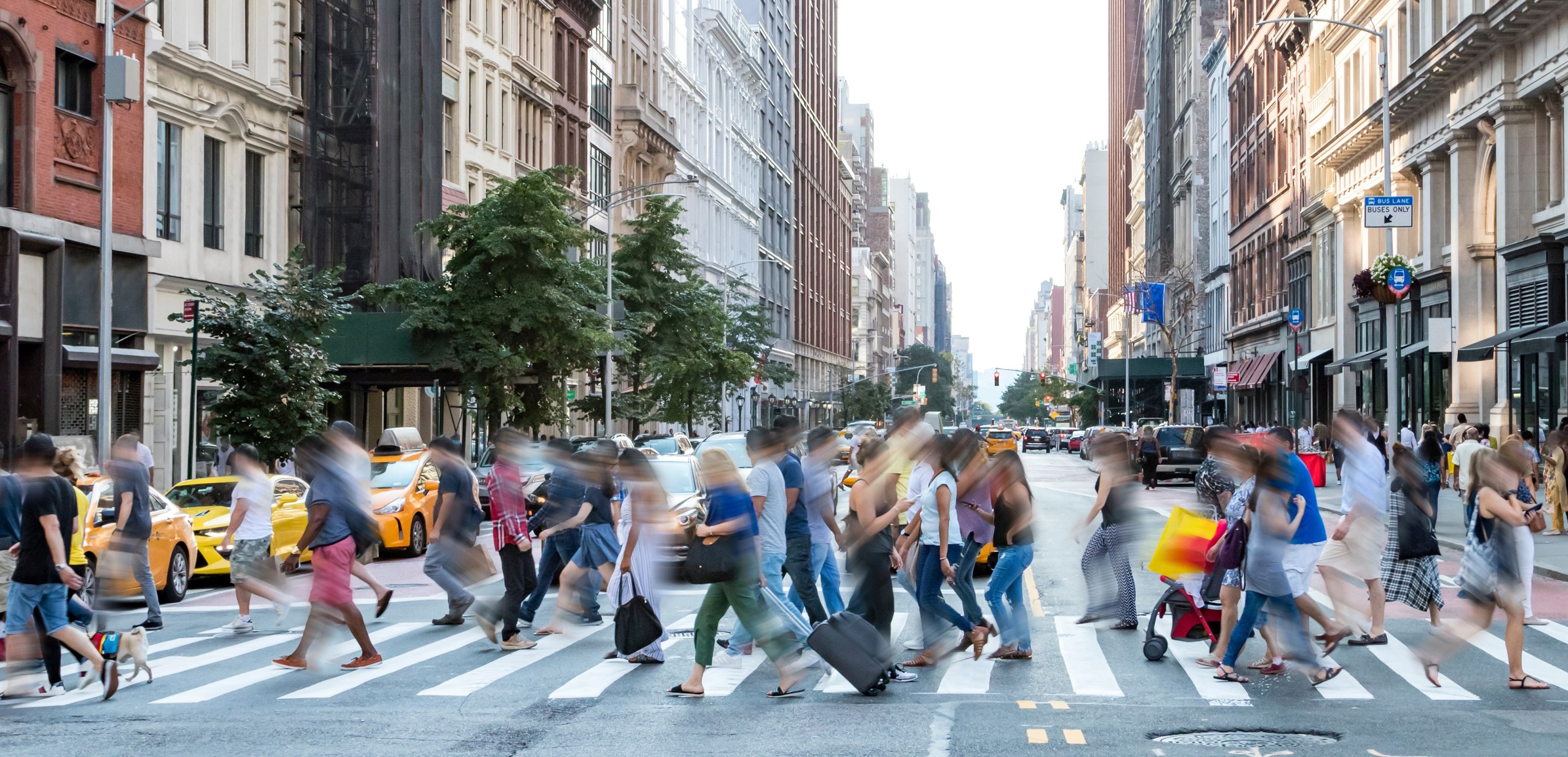Walking is the most fundamental and universal form of transportation. Nearly every trip begins and ends on foot, yet many urban environments fail to prioritize pedestrians in their design.
Beyond mobility, walking plays an essential role in supporting physical and mental health. Research shows that it lowers the risk of chronic conditions such as cardiovascular disease, diabetes, and obesity, while also boosting mental well-being by reducing stress, lifting one’s mood, and enhancing creativity. If walking offers so many benefits, why, especially in America, is it not a more common part of daily life?
In many cities, walking is underutilized because of poor infrastructure and uninviting environments. Car-centric planning, which took hold in the mid-20th century, prioritized vehicles over pedestrians, resulting in sprawling suburbs, highways, and vast parking lots that fractured communities. In these environments, walking often feels unsafe, inconvenient, or unappealing.
Every trip on foot generally has a destination and a journey to consider. Pedestrian journeys require the most basic amenity — a sidewalk — yet many places still lack them. The experience of the journey is critical, as people are more likely to walk when it feels safe, engaging, and enjoyable — encouraging movement toward a destination.
How the brain navigates cities
At any given moment, the brain is processing 30 to 40 different data points. To manage this complexity, it relies on shortcuts — sometimes referred to as prejudices — to make sense of the environment. This process, known as "chunking," allows people to break tasks or surroundings into smaller, more manageable pieces. When walking, the brain uses visual and physical cues to quickly assess whether a journey feels safe, stimulating, and worth continuing.
For example, passing shop windows, park benches, or street art can create moments of delight that make a walk more enjoyable and less scary or overwhelming. In contrast, when spaces feel empty or lack activity, the brain fills in details and often assumes the worst to protect us from what might lurk around the corner.
Urban design influences cortisol production
Cortisol, often called the stress hormone, is released not only in moments of pressure, but also in response to dull or unengaging environments. When people encounter spaces that feel vacant or uninviting, the brain reacts with stress. Expansive parking lots, wide empty streets, and barren plazas can act as cortisol triggers, signaling discomfort and unease rather than calm.
Pedestrians often feel safer walking along sidewalks flanked by interesting buildings or parked cars that protect them from moving cars, as these edges create a sense of protection and grounding. In contrast, wide-open spaces or sidewalks next to fast-moving traffic can cause stress and anxiety, triggering the release of cortisol.
This release of cortisol is also paired with thigmotaxis. Thigmotaxis is the response by humans, all mammals, and most animals to find security by “hugging” a wall or walking along an edge. This is the reason that deer walk along the edge of a forest – so they can duck into the trees in case a predator comes around. Without edges, we feel less safe. And when we feel unsafe, our brains create cortisol.
Mental health in the built environment
Cognitive engagement stimulates the brain, creating memories and moments of delight. People rely on continuous stimuli to stay interested, yet many communities are not designed with this in mind. Blank facades, empty storefronts, or unexpected obstacles on the street fail to capture attention and do little to encourage people to return.
What makes the difference is sensory stimulation. Streets should be designed like gardens: full of attractive smells, sounds, sights, people, texture, and depth. Current zoning regulations often prioritize parking capacity and building setbacks instead of focusing on the elements needed by people: spaces with edges and walls, safety and comfort, and places that invite exploration. In other words, we need rules that prioritize walking along attractive places instead of in front of dull parking lots.
Colin Ellard, a neuroscientist who studies the psychology of urban spaces, has proven that pedestrians are more engaged and emotionally connected in environments with layered sensory experiences, including greenery, diverse architecture, and active public spaces. These elements not only keep pedestrians motivated but also strengthen their emotional attachment to the space.
Walking is not just a mode of transportation; it is a vital activity that supports physical health, emotional well-being, and social connections. All of this is critical to our brain chemistry which controls our every movement. By prioritizing pedestrian-friendly design, cities can transform dull, car-centric environments into vibrant spaces that are more economically vital, encourage movement and foster community.
The science of walkable cities is clear: thoughtful urban design can enhance individual well-being, strengthen social bonds, and create healthier, more connected communities for generations to come.






